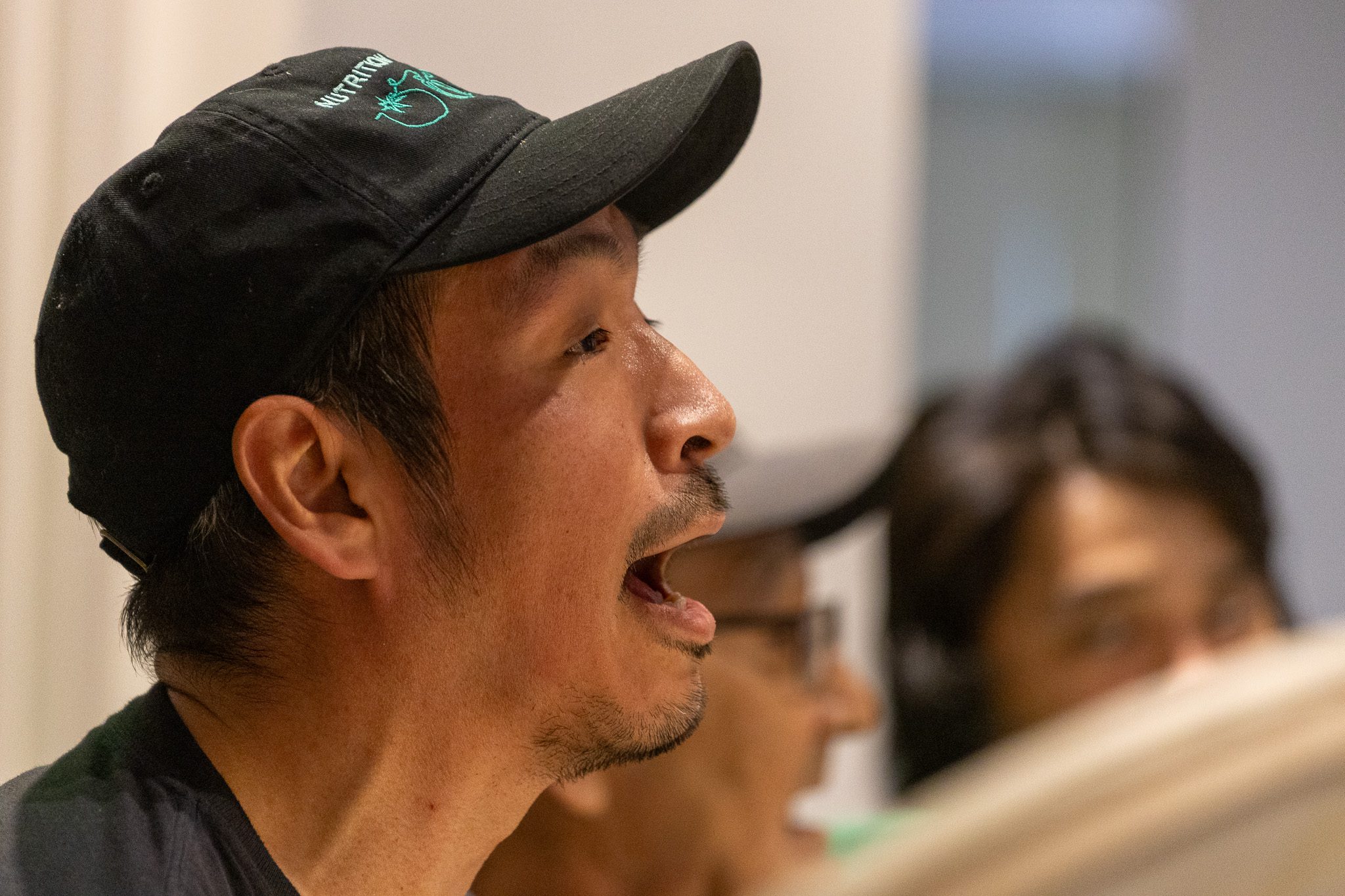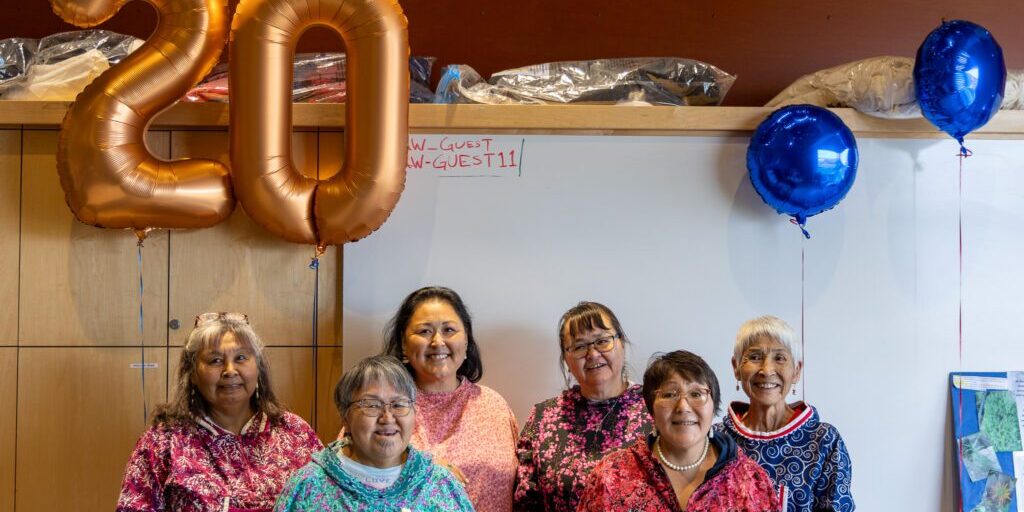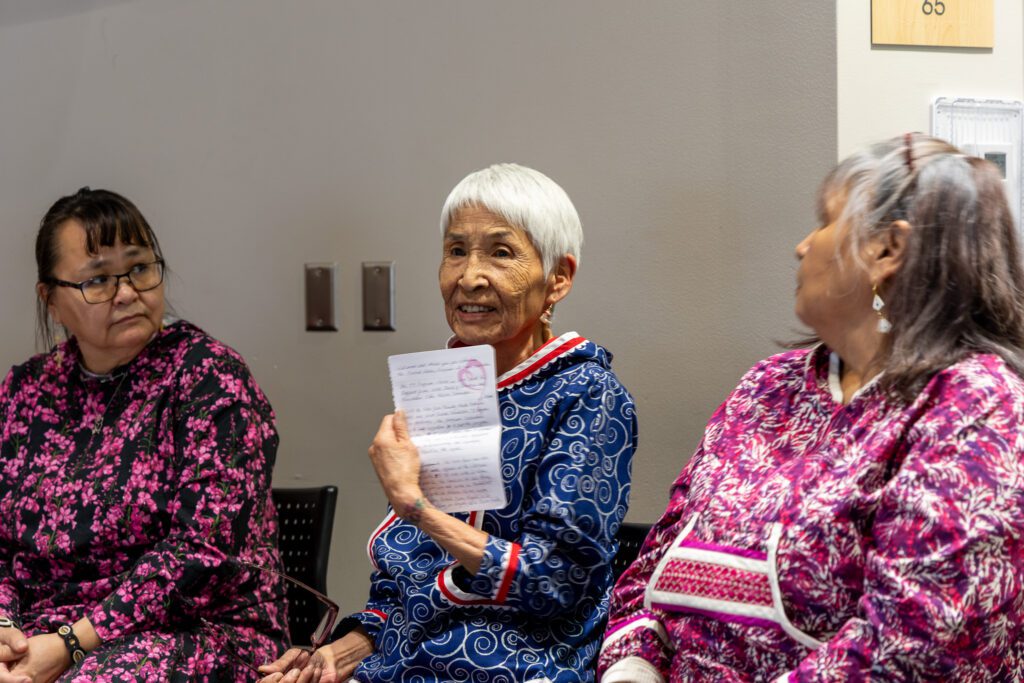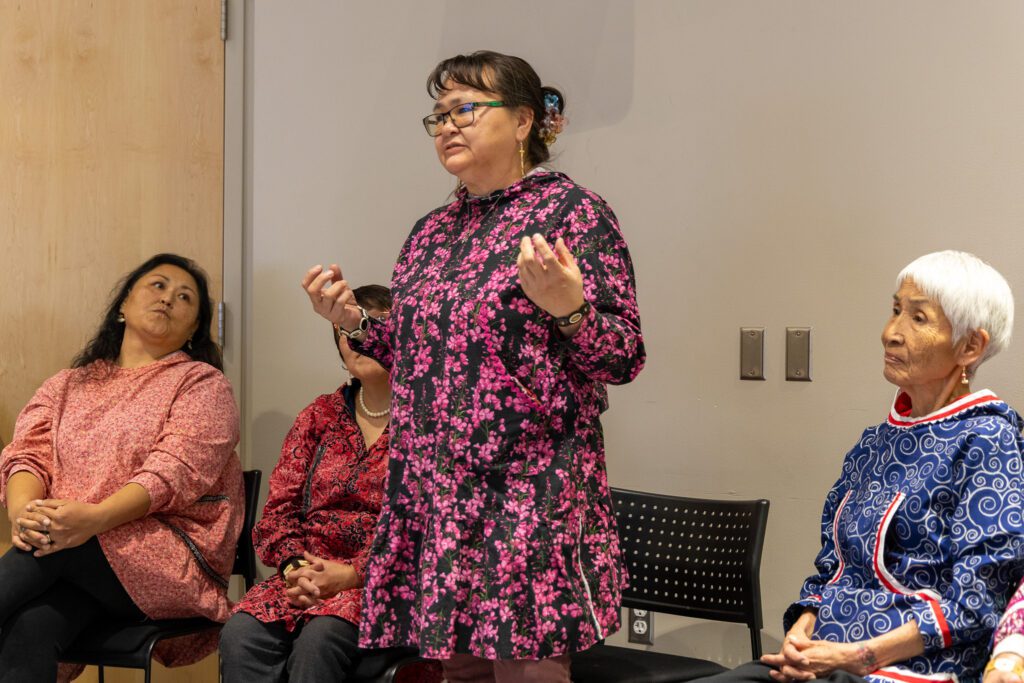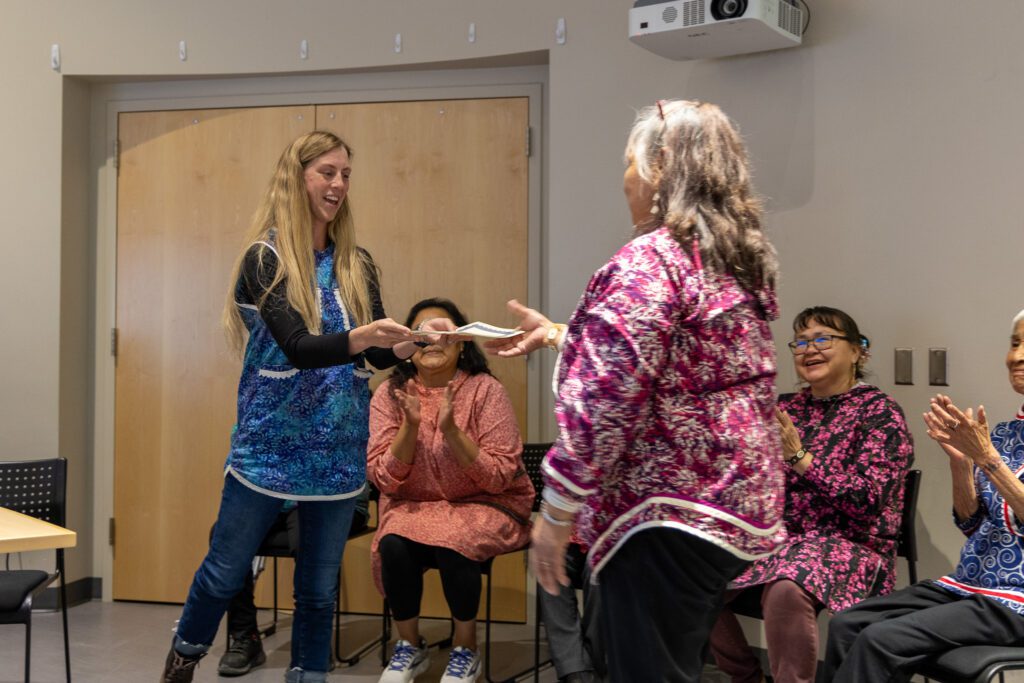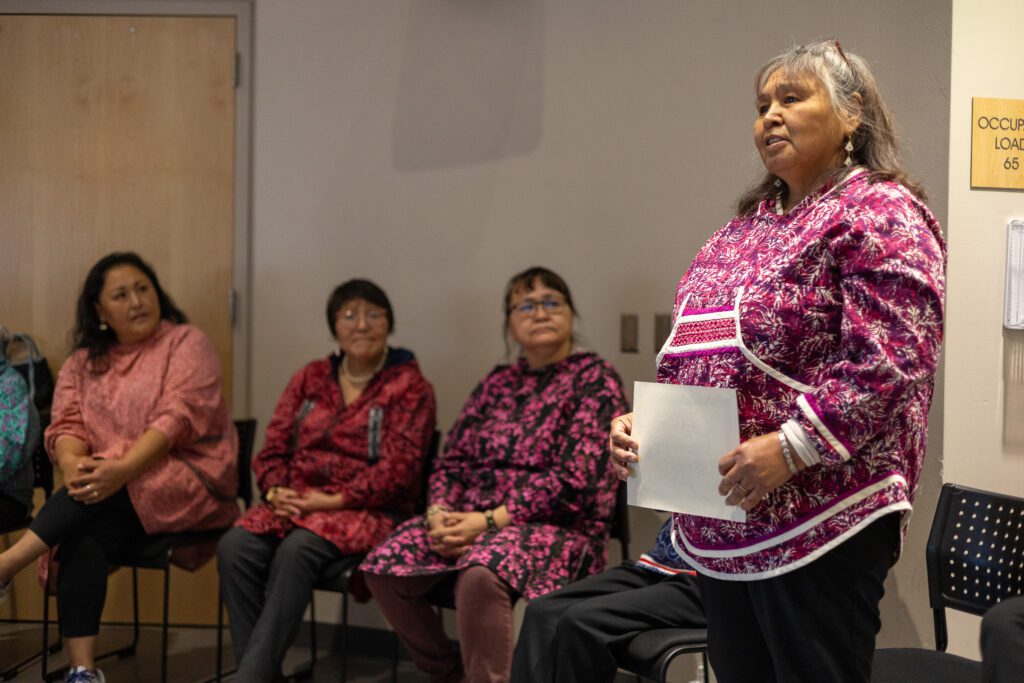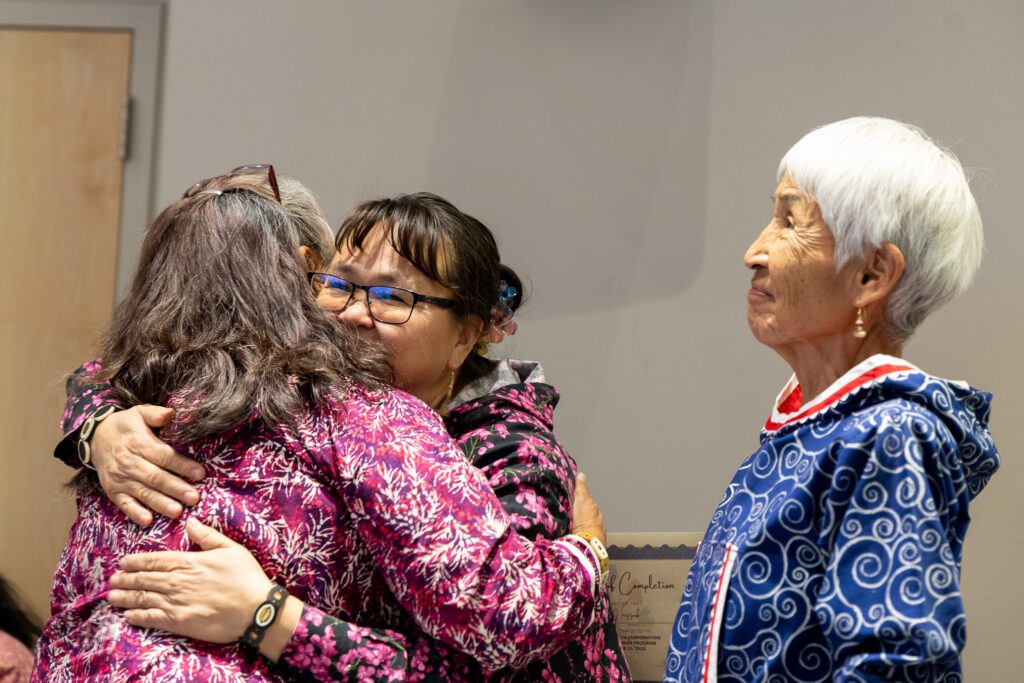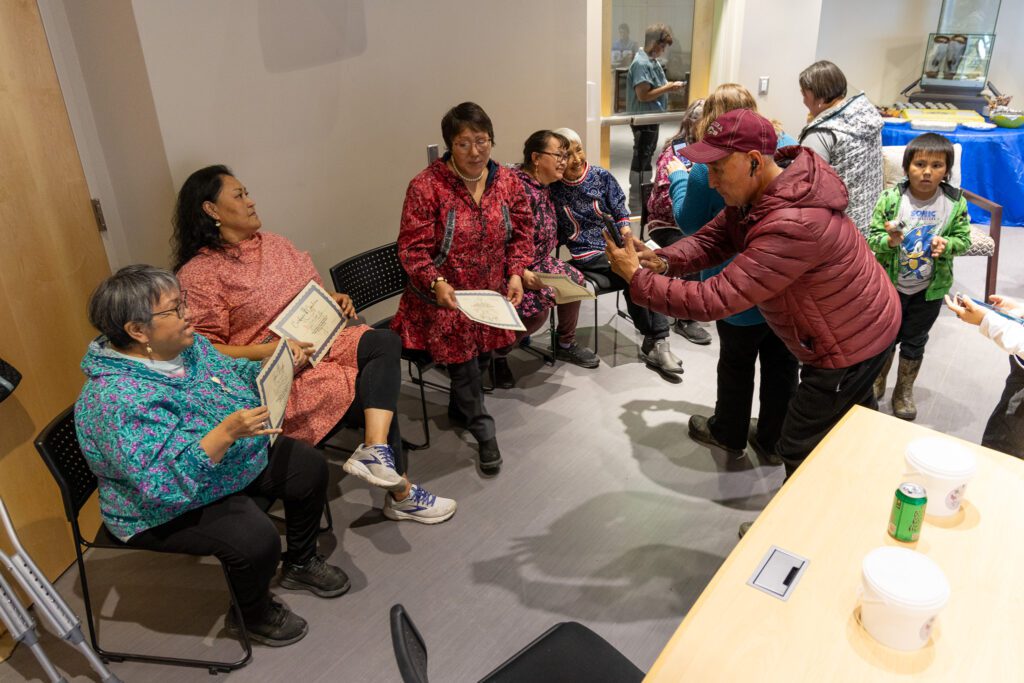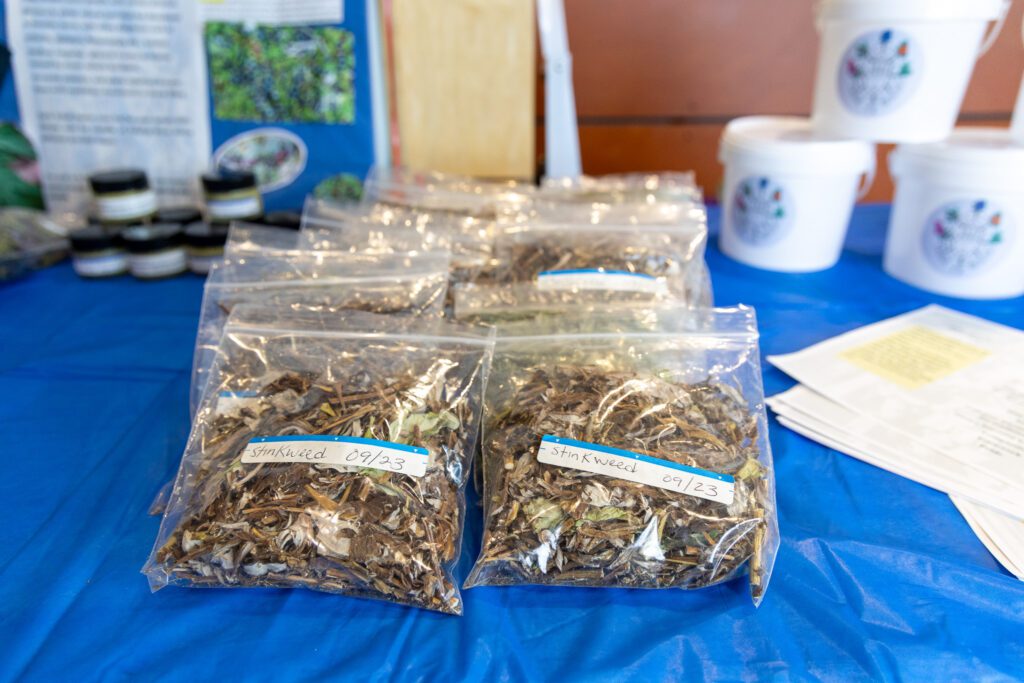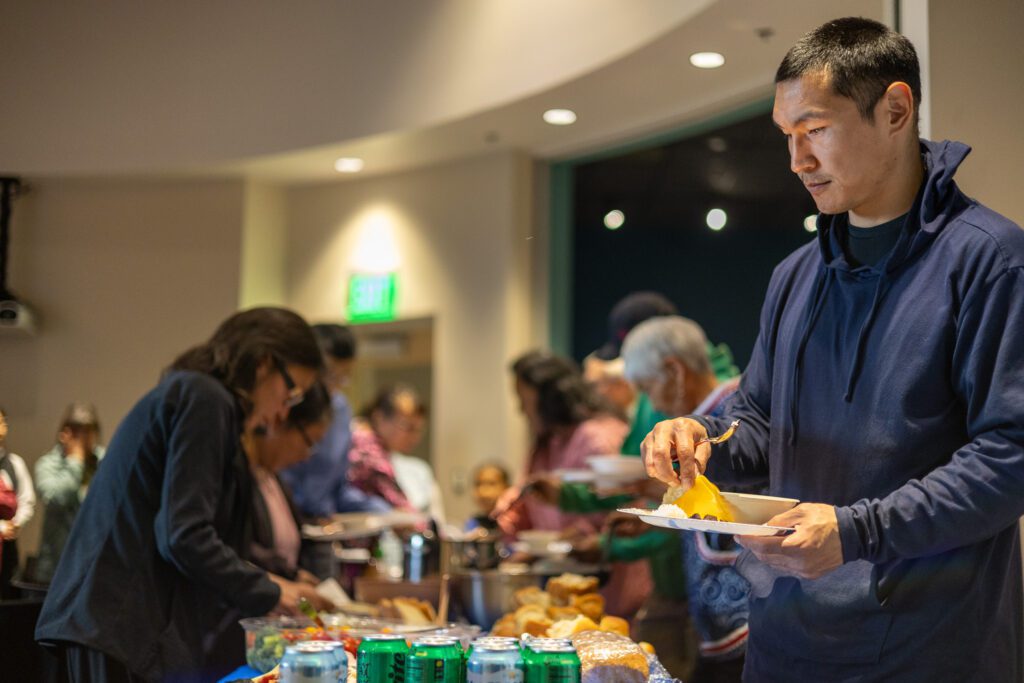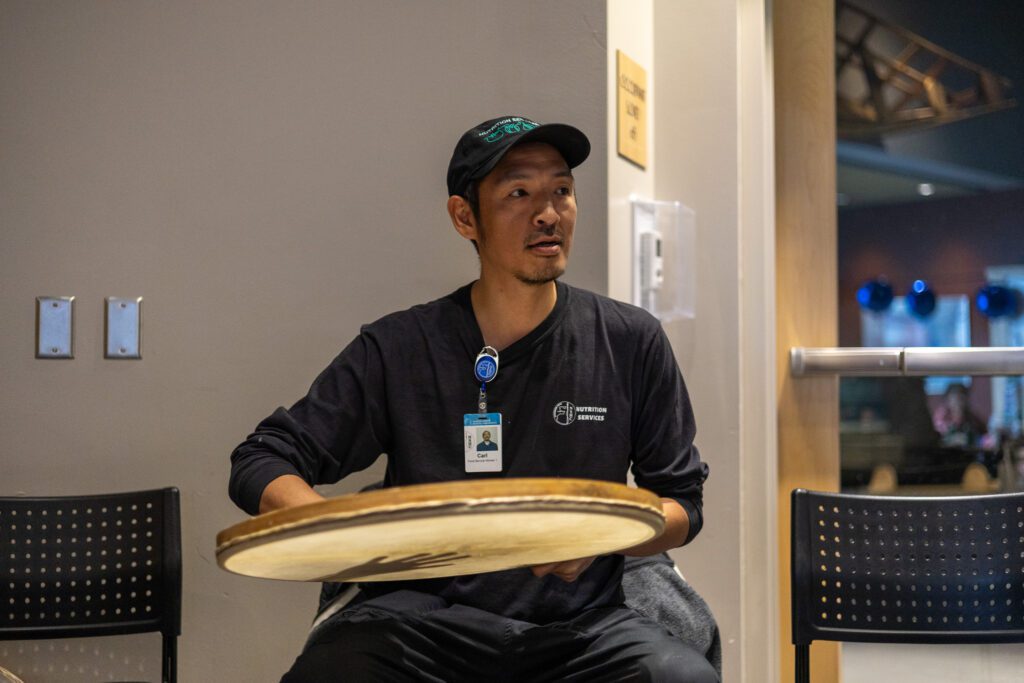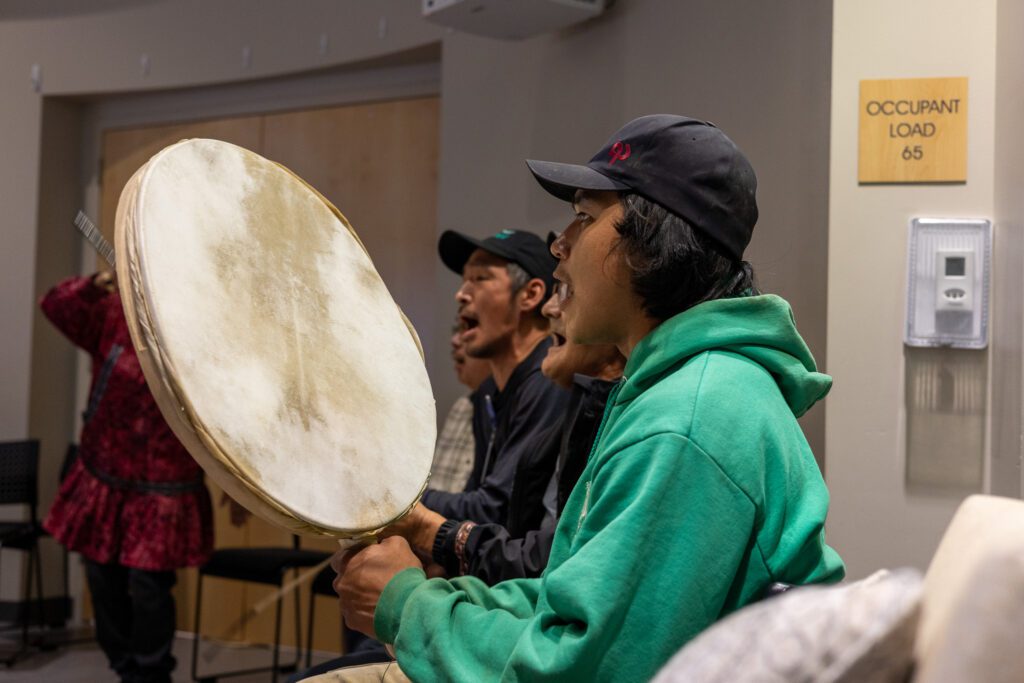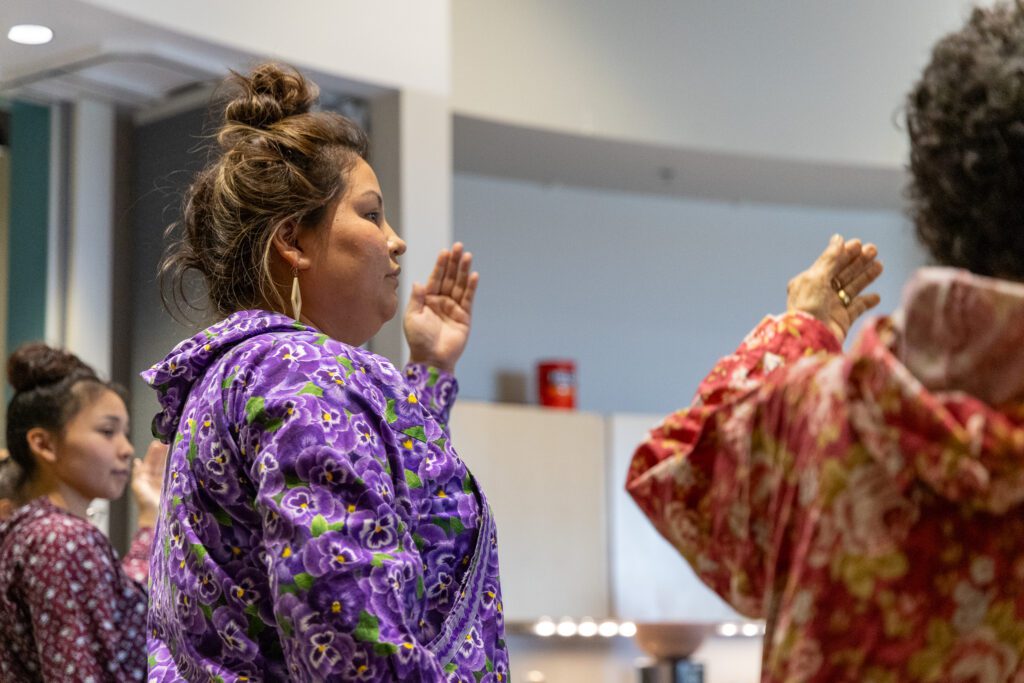Standing before a crowd of family and friends huddled inside Nome's Katirvik Culture Center, Maria Dexter read from a handful of handwritten notes.
“I'd like to welcome you and thank you for attending the tribal healer program 20 year celebration,” Dexter began.
After thanking a number of people involved with the program over the years, she reflected on the importance of the work the tribal healers perform.
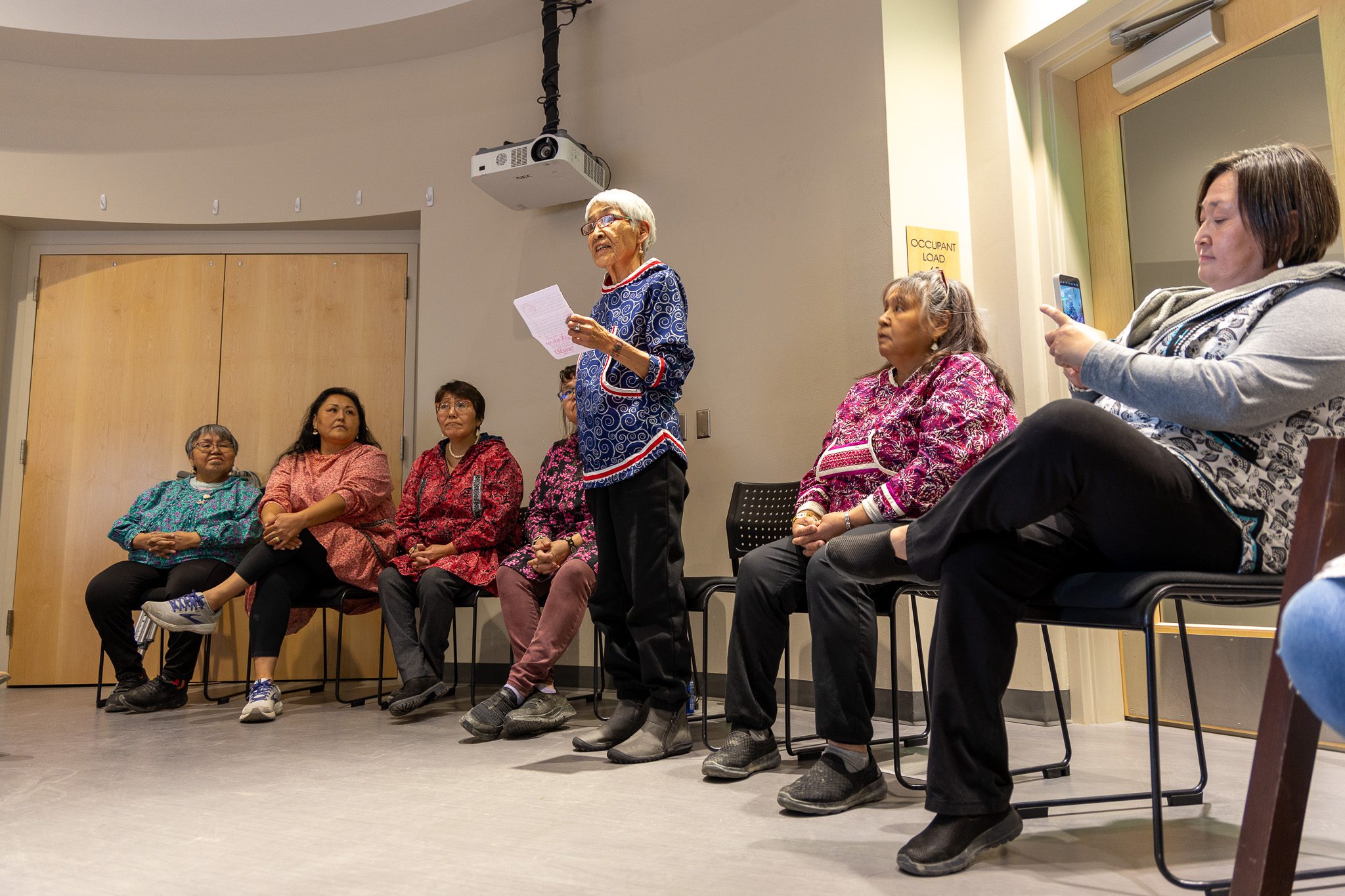
“We know that tribal healing has always been a part of our cultural lifestyle for many years, and we have been able to survive. Although we have lost parts of our way of life with our language and subsistence lifestyle, I'm really happy and thankful that Norton Sound Health Corporation is keeping the traditional tribal healing program alive in this region,” Dexter said.
Dexter helped start Norton Sound Health Corporation’s Tribal Healing department in 2004. Now, 20 years later, she is surrounded by seven women in the program, each wearing colorful kuspuks as they listen intently to every word their leader speaks.
The tribal healers are accredited by the hospital through a rigorous training program and employ a variety of native practices to care for their patients. Over the summer, the tribal healers handpick plants like stinkweed, sura, and rose root for use in their practice. Originally from Diomede, Tribal Healer Etta Tall shared that some of the plants are used to make salves that are then massaged into sources of pain.
“Lot of our people go through a lot of pain and when they go through a lot of pain, they get lot of stress. But as we work on them and the pain resided, they're all happy. They're all joyful, their quality of life is better. That's what I like about being a tribal healer, because I can see them when they're hurting and they come out not hurting anymore.” - Etta Tall, Tribal Healer
The group of women hail from villages across the region. Evelyn Karmun of Kotzebue is working with Norton Sound Health Corporation to help the Northwest Arctic Borough's Maniilaq Association revive their own tribal healing program. Koyuk’s Audrey Nassuk recently completed her training and received her certificate to applause from the crowd. Tribal healers Anne Marie Ozenna of Diomede and Renee Cooper of Unalakleet were also in attendance.
Following speeches from each tribal healer, elders were invited to fill a plate full of native foods including seal and walrus. For dessert, attendees could indulge in tundra delight and akutaq. The berry-based dishes were handmade for the occasion and were served alongside a sheet cake with the tribal healer department’s logo, designed by Mandy Ellanna.
A four-man drummer group led by Carl Topkok then took to the front of the room. They performed several songs over the course of half an hour as women from the audience took turns dancing.
Just feet away from the drummers, Dexter took in the performance with her granddaughter by her side and great-grandson in her lap. Her short, silver hair glowed as if a spotlight was shining on her. She watched as the women she had mentored, the people she had cared for, and the community she had served for two decades celebrated together in the small room. Her wrinkled face exuded confidence and strength, steadfast in the belief that her culture’s ancient practices had a place in the modern world too.
